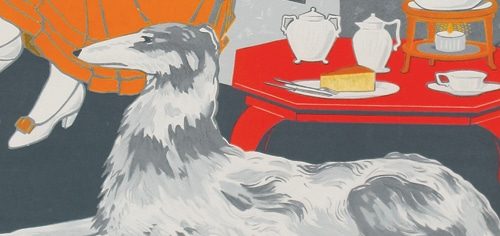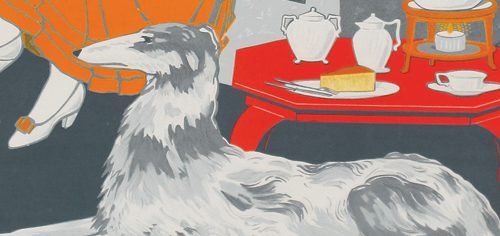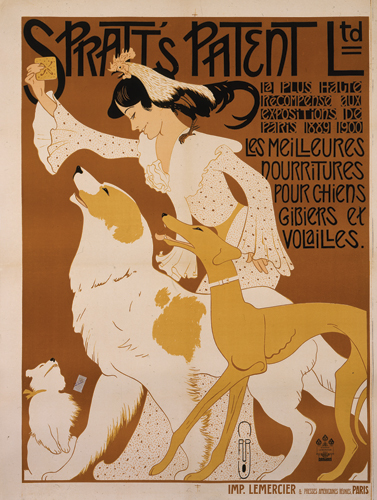

A Rare Vintage
Vintage Dog Posters
Our new obsession? Vintage dog posters. While in New York for this year’s Westminster dog show, we happened upon La Belle Époque, a magical little shop in Greenwich Village, and proceeded to while away hours digging through a veritable treasure trove of art from the Golden Age of advertising. The posters carried at La Belle Époque, all originals, date from the mid 1800s through the 1990s, with the bulk of the inventory from the 1890s through the 1960s.
Owners Elie Saporta and Linda Tarasuk, along with their shop dogs, long-coated Chihuahuas Honey and Lulu (or the “Mexican-American princesses”) are welcoming and a font of knowledge, willing to unearth posters according to your preference, be it food, drink, bicycles, travel, or, in our case, dogs. Elie also makes the best cappuccino going.
We asked them if they would share some of their favourite posters featuring dogs and they dug up these beautiful examples.
Interested in getting a vintage poster to grace your wall? Check out la-belle-epoque.com. Poster prices start as low as $75.
Clinique Cheron Artist: Theophile Alexandre Steinlen (1859-1923) Approx. Size: 116 cm x 156 cm Circa: 1909 Origin: France
Spratt’s Patent Ltd. Artist: Auguste Roubille (1872-1955) Approx. Size: 137 cm x 193 cm Circa: 1905 Origin: France

Waxine Theelicht Artist: Kramer Approx. Size: 43cm x 74cm Circa: 1910’s Origin: Holland
Q+A with La Belle Époque
Where are most of your posters from?
In the beginning, France was the largest producer of advertising art. Although the bulk of the surviving original advertising posters are from France, we have posters from Germany, Italy, Austria, Belgium, the United Kingdom, the United States, and more.
How were the posters made?
In the second half of the 19th century, the modern advertising posters were lithographs using limestone as the printing plates. As advertising moved into the 20th century, limestone was replaced with zinc plates to accommodate larger advertising campaigns. As some campaigns required a very large quantity of advertising posters, like the USA WW1 patriotic posters, they used offset printing. The value of the original vintage posters is dependent on rarity, condition, and importance and not on the printing method.
What do you love about vintage posters and how did you get started collecting and selling them?
The beauty, the size, the history, the collectability, the fact that they are documents of another era. Imagine being able to own, enjoy, and afford art that is museum worthy and documented. Most major museums have permanent collections of vintage advertising posters. These posters work well with all kinds of décor and are especially fabulous for warming up a room that is contemporary and lacking colour. In 1985, with over 160 posters between us, we decided to go into a partnership and open a gallery. We needed to sell some posters so that we could purchase more for our personal collections!
Join the newsletter and never miss out on dog content again!
"*" indicates required fields
By clicking the arrow, you agree to our web Terms of Use and Privacy & Cookie Policy. Easy unsubscribe links are provided in every email.

